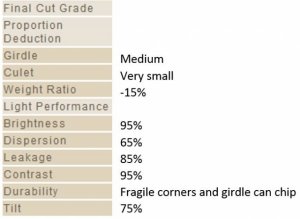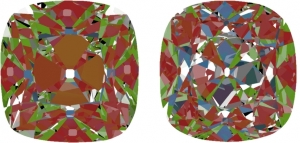- Joined
- Jul 27, 2009
- Messages
- 3,761
MelisendeDiamonds|1408148972|3733303 said:DiaGem|1408144865|3733271 said:Rockdiamond|1408136833|3733204 said:teobdl|1408135458|3733187 said:DiaGem--
Setting that diamond to take full advantage of the light entering below the girdle would be very important information for the owner of that kind of diamond, or any other that was designed in this way.
Prongs would block, maybe, 30% of light entering just below the girdle?
When set, would those areas in the corner of the table not be darker than what's in those pictures?
this s a great question!
In my experience, many diamond designs are affected by light entering the pavilion- particularly in the setting.
I have not noticed it specifically affect the prong areas as you suggested- however I have never set a diamond like the new one Yoram posted. (yet)
That's exactly the point of light designed Diamonds, their purpose is to emphasize a specific appearance, in this case a solid red (Aset) center star. Sure, it "might" have an effect but who says its negative? Don't all settings have the potential to affect? Let's not forget it's still a respectable AGSL 1 for LP (0.91 deduction vs a 0.49 needed for a 0 grade) and will probably earn 0's for both symmetry and polish.
Based on our tests, it's not that sensitive as you might imagine.
How much of that deduction is Brightness deduction versus Leakage?
MD, Here is Yoram's statement on the grading metrics from his earlier post:
DiaGem|1408134552|3733179 said:This specific design was analyzed by AGSL on its 3D file, it got deductions as you estimated very well both for brightness 0.60 & leakage 0.31. (Based on memory as I am out of the office). A cumulative deducted score of 0.91 (e.g. LP score of 1).
It's a pity as this cut performs amazingly and also displays a controlled play of light based on its design. The problem is the AGS 1 grade can't be translated into a top cut simply because it's grade is based on that "bad" leakage where the pics and asset clearly show it's not.
Maybe if we could have the algorithm numerical value listed on the grading reports we could have a better chance utilizing the AGSL grading system for other cuts rather than just triple 0's.
I think consumers will be better informed if we can show them how the grade was set.
You both have alluded to the actual AGSL grading metrics which I think is very important to keep in mind in this discussion; ASET is only the graphical representation of the angular spectrum that the diamond is reflecting. While an integral part of AGS PGS construct, it is not the grading system per se. The system, through calculations by its ray tracer, assigns numerical deductions for deficits in brightness, contrast, leakage and dispersion. And since those deductions are cumulative, you can have small deficits in each characteristic that add up to a grade deduction.
One implication of this is that it is possible to see alot of red in an ASET and not get AGS 0. Conversely, it is possible to see a relatively large amount of green in ASET and still get AGS0 (depending on the shape).





300x240.png)